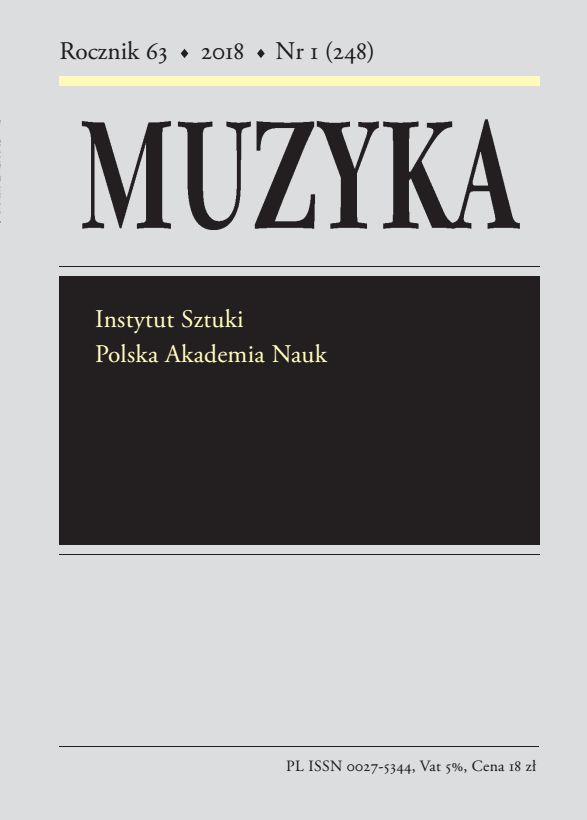Nowo odkryte fragmenty "Lamentationes"
Wacława z Szamotuł: przyczynek do odczytania źródła
Newly discovered fragments of Wacław of Szamotuły’s 'Lamentationes': A contribution to interpreting the source
Author(s): Marcin SzelestSubject(s): Music
Published by: Instytut Sztuki Polskiej Akademii Nauk
Keywords: Wacław of Szamotuły; Lamentationes; Polish music; sixteenth-century music
Summary/Abstract: This research report concerns newly discovered fragments of the original print of the previously unknown Altus and Bassus partbooks of Wacław of Szamotuły’s 'Lamentationes Hieremiae Prophetae', presented in an article by Ryszard J. Wieczorek and Michał Wysocki (Muzyka 62/2 (2007), pp. 4–20) and available in the form of a facsimile edition prepared by Jakub Łukaszewski and Wiesław Wydra (Poznań 2016, photos 19 and 20). The author argues the possibility that the discovered sheet is not a trial print, but part of a defective copy and that – contrary to the claims made by Wieczorek and Wysocki – the musical material preserved in the discovered folios does not contain mistakes. The author presents and justifies examples of alternative interpretations of some passages in 'Lamentationes', particularly in cases where notes illegible due to paper loss had to be supplemented and where the bass part had to be reconstructed; the author assumes that imitation technique was employed by Wacław of Szamotuły consistently in all parts of the composition, except for quotations from the reciting tone. Also, the author analyses the way in which the text is correlated with the music in the discussed fragments of the original print, shaped by conflicting influences: on the one hand, the care shown by the Cracow printer Łazarz Andrysowicz in marking melismas by graphically separating syllables in the text; on the other, the technical restrictions caused by the need to match syllables and notes correctly. If the observed principles were confirmed in relation to the entire available material of 'Lamentationes', the author would propose abandoning the practice of the arbitrary placement of melismas in transcriptions and editions, and adopting instead a methodology for the correlation of text and music based on the identified practices of a given printer.
Journal: Muzyka
- Issue Year: 63/2018
- Issue No: 1
- Page Range: 87-99
- Page Count: 13
- Language: Polish

